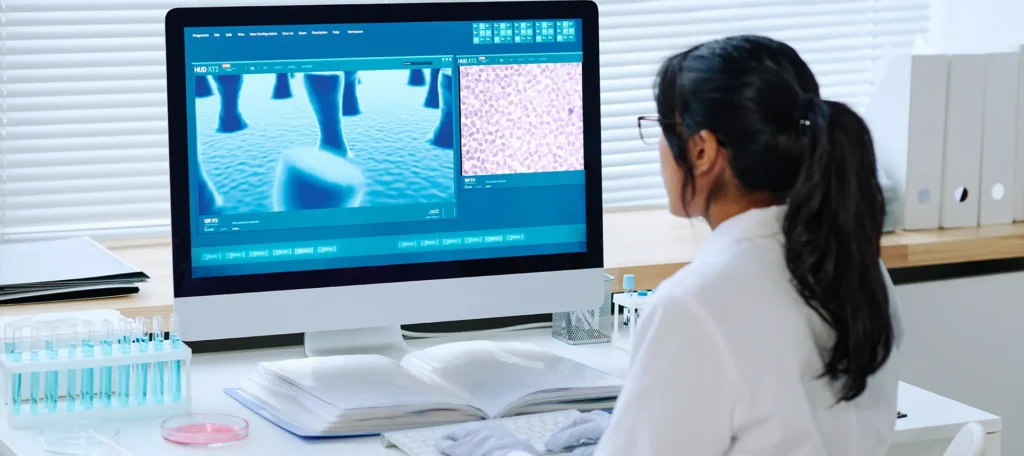Understanding Biologics and Their Role in Dermatology
Biologics have transformed the treatment of chronic inflammatory skin conditions, particularly psoriasis and atopic dermatitis. These advanced therapies target specific immune system pathways involved in inflammation, offering patients relief where traditional treatments may have failed. Unlike broad immunosuppressants, biologics are designed to interrupt precise molecular targets, such as TNF-α, IL-17, IL-23, or IL-4/IL-13 pathways.
Their effectiveness and rapid symptom control have made them a mainstay in moderate-to-severe cases. However, the question of long-term safety—especially over 5 to 10 years of continuous use—has remained a topic of clinical interest and concern. Recent longitudinal studies now provide much-needed insight into the risks, benefits, and overall patient outcomes associated with long-term biologic use in dermatology.
The Importance of Long-Term Safety Data
While short-term trials established the efficacy of biologics, long-term data are crucial for understanding their safety profile. Chronic conditions like psoriasis and atopic dermatitis require lifelong management, meaning patients may remain on biologics for many years. Long-term safety studies help clinicians assess risks of serious infections, malignancy, and cardiovascular events.
They also examine potential changes in drug efficacy over time and the development of neutralising antibodies. Recent cohort and registry-based studies have begun tracking large populations of dermatology patients on biologics for up to a decade, offering new insights into how these drugs behave in real-world settings and what clinicians should consider when prescribing them long term.
Key Studies Examining Biologics Over a Decade
The British Association of Dermatologists Biologics and Immunomodulators Register (BADBIR) and other international registries such as PSOLAR (Psoriasis Longitudinal Assessment and Registry) have provided a wealth of data. BADBIR, in particular, has followed thousands of patients in the UK treated with TNF inhibitors and newer IL inhibitors.
These studies report no significant increase in overall cancer risk, though close monitoring continues. PSOLAR found that infection rates were initially elevated but plateaued with proper monitoring. These findings reinforce that biologics, when used responsibly, have a favourable long-term safety profile for many patients. However, outcomes can vary depending on the specific biologic used and the patient’s individual risk factors.

Infection Risk: What the Data Shows
One major concern has been the risk of serious infections, given that biologics modify immune responses. Long-term data now suggest that while there is a modest increase in infection risk in the first year, this risk often stabilises or declines with time and careful monitoring.
For example, TNF inhibitors are more strongly associated with infections compared to IL-17 or IL-23 blockers. Risk factors such as advanced age, obesity, diabetes, or concomitant immunosuppressive use can further elevate susceptibility. Clinicians are advised to screen patients for latent infections (like TB) and to ensure vaccinations are up to date before initiating treatment.
Cancer Risk: Understanding the Landscape
The fear of increased cancer risk has historically accompanied all long-term immunosuppressive therapies. However, data from BADBIR and other studies are reassuring. Overall cancer rates in patients on biologics have not been shown to be significantly higher than in the general population.
Importantly, there is no clear evidence linking biologics to increased skin cancer or lymphoma risk, though vigilance remains important. Ongoing studies continue to track these metrics, particularly in patients with prior malignancies. For most patients without prior cancer, the benefits of biologic therapy outweigh potential risks when proper screening protocols are followed.
Cardiovascular Outcomes on Biologic Therapy
Interestingly, some studies have found that biologics may improve cardiovascular outcomes by reducing systemic inflammation. Chronic skin conditions like psoriasis are associated with increased cardiovascular disease risk. Biologics—particularly those targeting IL-17 and IL-23—appear to reduce markers of inflammation such as C-reactive protein (CRP), potentially lowering cardiovascular risk.
Longitudinal data show that patients on biologics have fewer cardiovascular events than matched controls with severe psoriasis not on systemic therapy. However, these findings require more controlled studies to confirm causation, and lifestyle factors still play a crucial role in overall risk reduction.
Immunogenicity: Do Biologics Lose Effectiveness Over Time?
Some patients experience diminished response to biologics after months or years. This is often linked to immunogenicity—the development of anti-drug antibodies that neutralise biologic activity. TNF inhibitors are particularly susceptible, especially infliximab and adalimumab. Using concomitant methotrexate can reduce this risk but may not be suitable for all patients. IL-17 and IL-23 inhibitors show lower rates of antibody formation. Long-term studies suggest that drug survival—the length of time a patient continues on a biologic—has improved with newer agents. Still, clinicians must be prepared to switch therapies if efficacy wanes or side effects arise.
Paediatric and Adolescent Use
Biologics are increasingly used in younger patients with severe atopic dermatitis and psoriasis. Safety data in this population are more limited due to shorter follow-up periods. However, early results are promising.

Agents like dupilumab and secukinumab have shown good tolerability in children and teens, with few serious adverse events. Growth and development metrics remain unaffected in long-term studies. Continued research is needed, but current evidence supports the cautious use of biologics in paediatric dermatology when other treatments have failed.
Mental Health and Quality of Life
Long-term biologic therapy is associated with sustained improvement in quality of life, including mental health. Chronic skin conditions can lead to depression, anxiety, and social withdrawal. Patients who respond well to biologics report higher self-esteem, reduced psychological distress, and better sleep quality.
These benefits are not always captured in clinical metrics but are increasingly recognised as crucial outcomes. Patient-reported outcome measures (PROMs) in long-term studies confirm these positive effects, reinforcing the holistic value of sustained disease control.
Biologics in Atopic Dermatitis: Dupilumab and Beyond
Atopic dermatitis was traditionally managed with topical steroids and systemic immunosuppressants. The introduction of dupilumab, which targets the IL-4 and IL-13 pathways, has redefined long-term care. Five-year safety data for dupilumab suggest a consistent side-effect profile, with conjunctivitis being the most frequent issue.
Serious adverse events remain rare. Newer biologics targeting IL-13 alone (such as tralokinumab) are entering the market with similar safety expectations. These agents allow long-term control without the systemic risks of older drugs like ciclosporin.
Real-World Evidence vs. Clinical Trials
Randomised clinical trials provide vital safety data but are limited in duration and patient diversity. Real-world studies—especially registries—fill this gap by capturing long-term outcomes across varied populations. These include patients with comorbidities, polypharmacy, or suboptimal disease control who are often excluded from trials.
As a result, real-world data offer more applicable safety insights for everyday clinical practice. Such findings have influenced treatment guidelines, encouraging a broader and more personalised use of biologics in dermatology.
Monitoring and Risk Mitigation Strategies
Best practice now includes baseline screening for infections, cancer history, and cardiovascular risk factors before starting biologics. Ongoing blood monitoring, patient education, and regular dermatology reviews are key to long-term success. Prompt identification of adverse events allows early intervention, while lifestyle modifications further reduce associated risks.

The use of digital monitoring tools and registries also helps track safety across populations. This proactive approach has contributed significantly to the safe, sustained use of biologics in dermatological care.
The Evolving Landscape of Biologic Innovation
Newer biologics are being developed with enhanced safety, targeted delivery, and reduced immunogenicity. Bimekizumab, for instance, targets both IL-17A and IL-17F, offering potential improvements over earlier drugs.
Other innovations include subcutaneous delivery systems and biosimilars, which may offer cost-effective, widely accessible alternatives. These advances are accompanied by long-term trials designed to assess not just efficacy, but safety and patient-reported outcomes over years—not months.
Balancing Risks and Benefits
For many patients, the long-term benefits of biologics—disease control, improved quality of life, and reduced systemic inflammation—far outweigh the manageable risks. Individual patient assessment remains crucial, considering comorbidities, previous treatments, and lifestyle factors.
Regular communication between dermatologists and patients helps tailor treatment and detect problems early. With growing data supporting their use, biologics continue to be a safe and life-changing option for many with chronic skin conditions.
Patient Adherence and Long-Term Engagement
One overlooked factor in long-term biologic safety is patient adherence. For biologics to deliver sustained benefits, patients must remain consistent with their treatment regimen—often for years. Studies indicate that adherence rates for biologics tend to be higher than for traditional systemic therapies, largely due to superior symptom control and fewer daily medications.
However, barriers like injection anxiety, cost, or perceived lack of improvement can still lead to dropout. Long-term studies are beginning to track not only drug survival, but patient engagement over time. Supportive care, accessible information, and responsive dermatology teams have been shown to improve long-term adherence and reduce treatment fatigue. Educating patients on realistic expectations and safety monitoring helps build trust and commitment to therapy. Addressing non-medical factors is just as important as clinical efficacy when evaluating long-term outcomes with biologics.
Economic Considerations and Health System Impact
Biologics represent a significant cost to both patients and healthcare systems. However, long-term data suggest that these upfront costs may be balanced by reductions in hospitalisations, emergency care, and productivity loss due to uncontrolled skin disease. Patients with moderate-to-severe psoriasis or atopic dermatitis often miss work, experience mental health challenges, and require frequent clinic visits when inadequately treated. Biologics have been shown to reduce these burdens over time.
In the UK, NHS cost-effectiveness assessments increasingly rely on long-term safety and efficacy data to justify continued coverage of biologics. NICE appraisals consider quality-adjusted life years (QALYs), and several biologics have met the thresholds for cost-effectiveness when used appropriately.
The arrival of biosimilars may reduce costs further, making long-term biologic treatment more accessible to wider patient populations. Ultimately, understanding the economic dimension helps contextualise long-term safety within the broader goals of patient care and system sustainability.
Biologics and Pregnancy Considerations
Another area gaining attention in long-term biologic safety is reproductive health. Many patients with chronic dermatological conditions are diagnosed in early adulthood and may remain on biologics through childbearing years. Early studies of TNF inhibitors and dupilumab suggest they are generally safe during pregnancy, with no major increase in birth defects or miscarriage rates.

However, due to limited sample sizes, most clinicians advise caution and individualised risk-benefit analysis. Some biologics can cross the placenta, especially in the third trimester, and may affect the newborn’s immune function temporarily. Longitudinal studies are beginning to track pregnancy and neonatal outcomes more rigorously, offering better guidance for future use.
As more women become pregnant while on biologics, clearer protocols are being developed, including timing of treatment cessation, switching agents, and postpartum monitoring. This evolving area underscores the importance of long-term safety not just for patients, but for future generations.
Combination Therapy and Long-Term Safety Implications
In some cases, biologics are used in combination with other treatments, such as methotrexate, phototherapy, or topical agents. Combination therapy can enhance treatment efficacy, especially in partial responders, but it also introduces complexity regarding safety. Methotrexate, for instance, can mitigate the development of anti-drug antibodies but carries its own risks, such as hepatotoxicity and bone marrow suppression.
Long-term data are still being gathered on the safety of combining biologics with other systemic agents. Early results suggest that the overall risk profile remains acceptable when careful monitoring is in place. Clinicians must balance efficacy with the potential for cumulative toxicity, particularly in patients with multiple comorbidities. Importantly, combination therapy should always be tailored and reviewed regularly, especially as patient needs evolve. Understanding how biologics interact with other long-term treatments helps dermatologists make informed, dynamic decisions that support both safety and sustained disease control.
Skin Microbiome and Immune Modulation Over Time
Emerging research into the skin microbiome is adding a new dimension to long-term biologic safety. Some studies suggest that biologics, by reducing inflammation, may positively alter the skin’s microbial environment, reducing pathogenic bacteria like Staphylococcus aureus.
In conditions like atopic dermatitis, where microbial imbalance plays a role, this effect could enhance long-term skin barrier function. However, modulation of the immune system over years may also lead to subtle changes in host–microbe interactions, the implications of which are still under study.
While no serious microbiome-related complications have been reported, researchers are beginning to explore how biologics affect not only skin symptoms but also the ecological balance of the skin. This opens up potential for future combined therapies—targeting both immune pathways and microbial diversity—for more holistic, long-term skin health. As our understanding grows, this could become another marker of long-term safety and therapeutic success.
Individual Risk Profiling: A New Era in Personalised Care
Long-term safety with biologics is no longer assessed with a “one size fits all” approach. Increasingly, dermatologists are turning to personalised risk profiling to predict which patients will tolerate biologics best over time. Genetic markers, comorbidity assessments, lifestyle factors, and even social determinants of health are being integrated into treatment plans.
For example, a patient with a history of recurrent infections, obesity, and poor adherence may require more intensive safety monitoring—or an alternative therapy altogether. Conversely, a younger, otherwise healthy individual may be a good candidate for long-term use with fewer interventions.
As predictive algorithms and AI tools become more advanced, clinicians will have more data-driven ways to weigh long-term risks. This shift toward individualised care enhances both safety and satisfaction, reducing complications and increasing the likelihood of sustained therapeutic success.
Role of Dermatology Registries in Shaping Safety Guidelines
Dermatology registries like BADBIR, PSOLAR, and the European Dermbio have played a pivotal role in shaping our understanding of long-term biologic safety. These large-scale, real-world databases track thousands of patients over time, capturing not just adverse events but also adherence trends, treatment switches, and long-term efficacy. By pooling data from diverse populations and clinical settings, registries offer insights far beyond what short-term clinical trials can provide.

They have helped identify subtle trends—such as the slightly higher risk of upper respiratory tract infections in some biologics or the longer drug survival rates of IL-23 inhibitors.
Furthermore, registry findings directly inform national and international treatment guidelines, ensuring that evolving evidence quickly translates into best practice. Continued investment in and expansion of these databases will be vital for the next generation of dermatological care, especially as newer biologics and biosimilars enter the market.
Looking Ahead: What the Future Holds for Biologics
The future of biologic therapy in dermatology is rapidly evolving. Beyond safety, researchers are exploring newer biologics with dual targets, longer dosing intervals, and improved delivery mechanisms such as wearable injectors. Innovations like personalised biologic selection based on genetic markers or microbiome profiling may further enhance outcomes while minimising risks.
Additionally, digital tools and teledermatology platforms are enabling more frequent, real-time monitoring of patients—allowing earlier detection of side effects and better patient engagement. As biologics become increasingly integrated into chronic skin condition management, the focus will shift toward precision care, affordability, and accessibility.
But amid this innovation, the foundation remains clear: biologics are safe and effective for long-term use when supported by evidence, vigilance, and a patient-centred approach. The years ahead will likely bring not only new treatments, but a deeper, more nuanced understanding of how to use them safely for the benefit of every patient.
Conclusion: Integrating Safety into Long-Term Dermatological Strategy
The growing body of long-term safety data on biologics is reassuring and reflects years of clinical vigilance and research. From infection and cancer risks to mental health improvements and economic benefits, biologics offer a viable, sustainable path forward for many patients with chronic skin disease.
Ongoing monitoring, real-world data collection, and personalised treatment planning are key pillars supporting this success. As new biologics enter the market and novel safety markers emerge, dermatologists must remain proactive—updating protocols and educating patients.
The ultimate goal isn’t just to clear skin, but to improve lives safely and sustainably over time. With thoughtful care, biologics can continue to deliver transformative results—now backed by the long-term evidence needed to use them with confidence.
References:
- Blauvelt, A., Papp, K.A., Griffiths, C.E.M., Randazzo, B., Wasfi, Y. and Shen, Y.K., 2017. Efficacy and safety of guselkumab, an anti–interleukin-23 monoclonal antibody, compared with adalimumab for moderate-to-severe psoriasis (VOYAGE 1 and VOYAGE 2): results from two randomised trials. Lancet, 390(10091), pp.2287–2295.
- National Institute for Health and Care Excellence (NICE), 2022. Biologic therapies for the treatment of moderate to severe plaque psoriasis in adults: Clinical guideline NG153. London: NICE.
Available at: https://www.nice.org.uk/guidance/ng153 [Accessed 13 May 2025]. - Egeberg, A., Mallbris, L., Gislason, G., Hansen, P.R. and Skov, L., 2017. Risk of serious infection, cancer and mortality in patients with psoriasis on biologics: a nationwide cohort study in Denmark. British Journal of Dermatology, 177(2), pp.435–443.
https://doi.org/10.1111/bjd.15438 - Smith, C.H., Jabbar-Lopez, Z.K., Yiu, Z.Z.N., Bale, T., Burden, A.D., Coates, L.C., Reynolds, N.J. and Samarasekera, E.J., 2020. British Association of Dermatologists’ guidelines for biologic therapy for psoriasis 2020: Update of previous guidelines. London: BAD.
- Mahil, S.K., Dand, N., Mason, K.J., Yiu, Z.Z.N. and Griffiths, C.E.M., 2019. Factors associated with adverse events from biologics in psoriasis: Real-world evidence from the British Association of Dermatologists Biologics and Immunomodulators Register (BADBIR). British Journal of Dermatology, 181(3), pp.485–493.
– A key UK-based observational study reporting long-term safety trends in routine clinical use.
